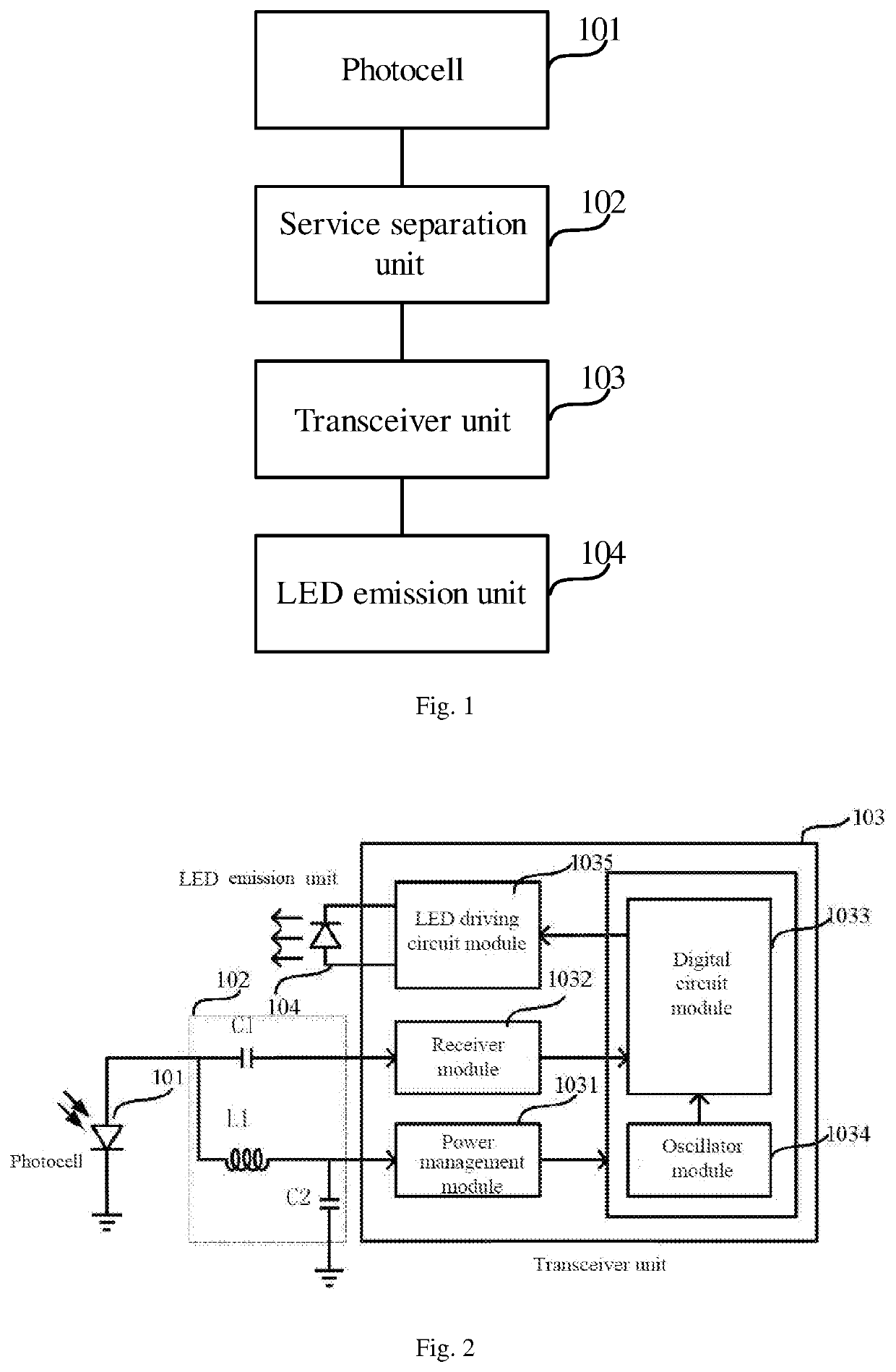Passive photoelectric tag
- Summary
- Abstract
- Description
- Claims
- Application Information
AI Technical Summary
Benefits of technology
Problems solved by technology
Method used
Image
Examples
Embodiment Construction
[0036]The technical solutions in embodiments of the disclosure will be explained clearly and completely with reference to the accompanying drawings in the embodiments of the disclosure. Obviously, the embodiments described are only some embodiments of the disclosure, rather than all of the embodiments of the disclosure. All other embodiments obtained by those skilled in the art based on the embodiments of the disclosure under the premise that no creative work is involved fall within the protection scope of the disclosure.
[0037]As shown in FIG. 1, a passive photoelectric tag provided by the embodiments of the disclosure includes:
[0038]a photocell 101, configured to receive an optical signal;
[0039]a service separation unit 102, connected with the photocell 101, and configured to separate the optical signal received by the photocell 101 into a DC voltage and an AC signal;
[0040]a transceiver unit 103, connected with the service separation unit 102, and configured to perform photoelectri...
PUM
 Login to View More
Login to View More Abstract
Description
Claims
Application Information
 Login to View More
Login to View More - R&D
- Intellectual Property
- Life Sciences
- Materials
- Tech Scout
- Unparalleled Data Quality
- Higher Quality Content
- 60% Fewer Hallucinations
Browse by: Latest US Patents, China's latest patents, Technical Efficacy Thesaurus, Application Domain, Technology Topic, Popular Technical Reports.
© 2025 PatSnap. All rights reserved.Legal|Privacy policy|Modern Slavery Act Transparency Statement|Sitemap|About US| Contact US: help@patsnap.com


